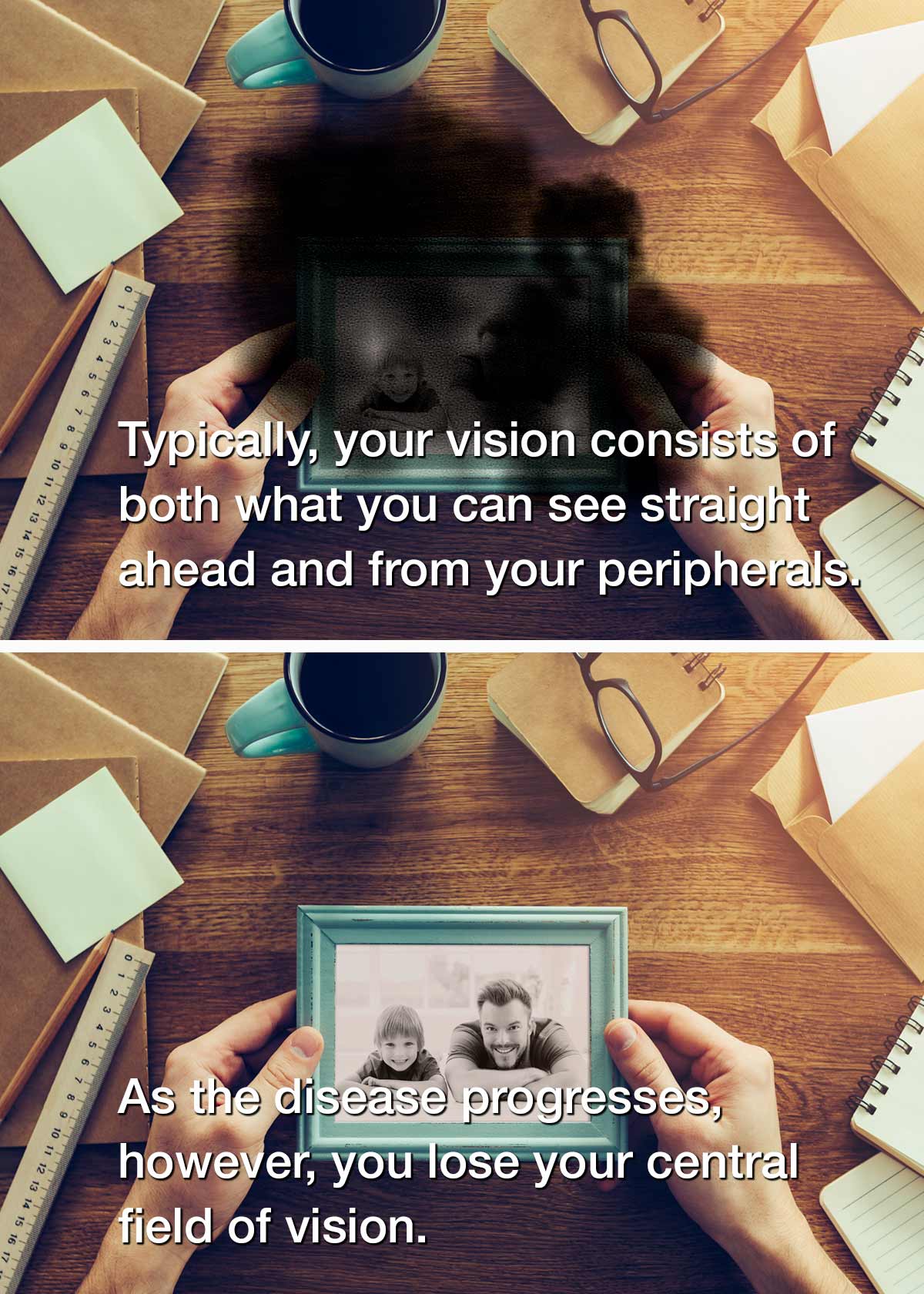
Macular Degeneration Treatment
Losing straight-ahead vision from age-related macular degeneration (AMD) is both frightening and frighteningly common in patients over 50.
Unfortunately, there is no cure for AMD. But there are lifestyle changes and therapies available to reduce risk or slow down the disease.
You’re afraid of losing your vision. How can treatment help?

Managing the Disease and Prolonging Your Vision
Reduced Risk
If the condition is diagnosed early and treated appropriately, regular and attentive treatment can slow it down. In certain cases, patients can keep their vision for decades.
Promising Research
Researchers are currently evaluating the effectiveness of numerous treatment options, including nutritional supplements and therapies that could further slow down AMD.
Options for Prevention
Because this disease typically develops later in life, patients can take measures to reduce their risk early on. Simple lifestyle changes, such as regular exercise and a balanced diet, can help significantly.
Areas of Promising Research
Navigating Expenses
For many patients, the most hesitation about treatment comes from potential cost. This is understandable: depending on the type of treatment, the total cost can range anywhere from as much as $2,000 to as little as $50 per session. However, vision loss is a serious concern. Even if there is not a cure, treatment can substantially slow down the condition’s progress. Your doctor will work closely with you to determine the most suitable option to preserve your sight.
Diagnosing Macular Degeneration
While the early stages of AMD are often asymptomatic, there are a number of ways the doctor can diagnose the condition, including:

Visual acuity test: Measures how well you see at a distance.

Dilated eye exam: Allows doctor a better view of the retina and optic nerve at the back of the eye.

Amsler grid: Identifies central vision loss by determining whether straight lines in a grid appear wavy or if they disappear all together.

Fluorescein angiogram: Visualizes leaking blood vessels in eye with a fluorescent dye.

Optical coherence tomography: Visualizes internal structure of eye via a light-based version of ultrasound.
Attending regular eye exams is crucial to diagnosing AMD and determining the most appropriate treatment before severe vision loss occurs.
Weigh Your Options for Treatment
Different stages of AMD require different treatments:
- Early: Treatment in the early stage usually consists of annual eye exams and lifestyle adjustments, such as diet and exercise.
- Intermediate: While there are some promising studies into nutritional supplements as treatment, lifestyle and regular exams are still the main options.
- Advanced: Your doctor can recommend a number of possibilities, including injections and laser surgery.
Which option is best will depend on the type of AMD you have.
Protect Your Vision for Decades
It is important to understand that there is no cure for macular degeneration. But there are still measures you and your doctor can take to slow the disease and preserve your vision for as long as possible. Reach out to schedule an appointment as soon as possible.







